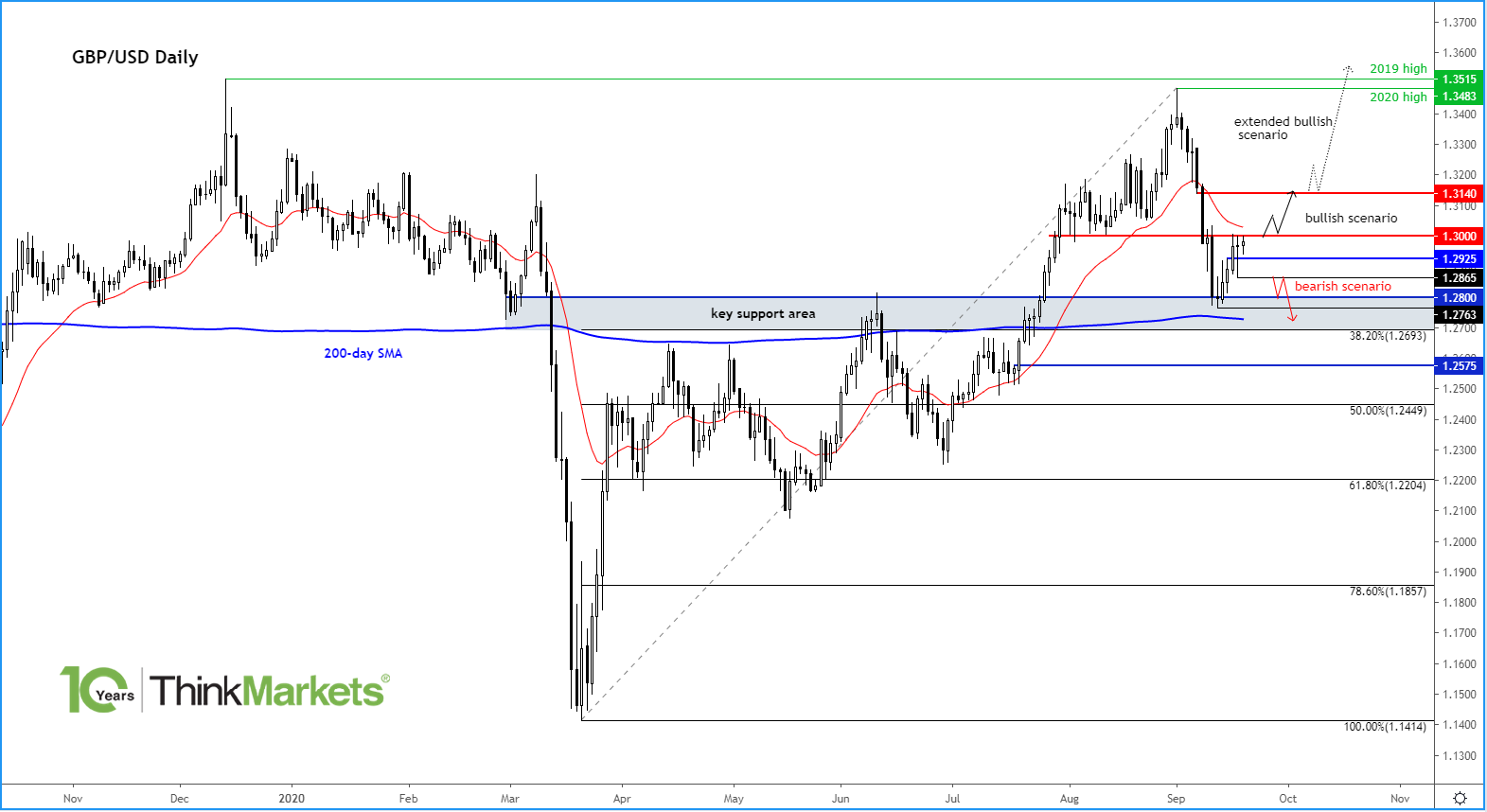As another week draws to a close, it looks like not much has changed. At the time of writing, European stock indices and US index futures were higher on the session and holding in the positive territory on the week despite heightened volatility in recent days. In FX, the US dollar has resumed lower, having started positively following a two-week rebound. The Dollar Index has been driven lower in part because of the rallying Japanese yen, while the euro has also turned higher for the week. It is also worth watching the GBP/USD (see chart below) and other pound crosses for potential upside after some positive noise regarding Brexit emerged on Thursday, just as the Bank of England signalled sub-zero rates might be on the cards in the not-too-distant-future. Meanwhile commodity dollars have rebounded along with underlying commodity prices, including copper which hit a new 2020 high today thanks to both a weaker US dollar and after Chinese industrial production data topped expectations at the start of the week. Precious metals have also rebounded today, while crude oil has extended its gains following sharp reversal a few days ago.
So, what’s behind the rebound in risk assets?
In short, ongoing economic recovery and vaccine hopes, as well as expectations that Federal Reserve and other major central banks will keep their respective monetary policy stances extremely accommodative for longer, much longer, in order to help boost output.
Momentum
One of the side-effects of central banks’ bond buying is that they are inflating bubbles in asset prices. Some investors have undoubtedly found out the hard way that they should not be fighting central banks as trying to be a hero and standing in the way has not worked out for them, despite obvious macro and valuation concerns. Others are taking advantage of the bullish momentum and simply buying just because assets prices have been on the rise, without caring much about the macro factors. This group of market participants argue that being ‘dumb’ and following price action is what matters because the markets and the economy have long been disconnected due to the actions of central banks post the financial crisis.
Central bank support won’t end anytime soon
Traders seem to have followed that logic this week, after the Federal Reserve, Bank of Japan and Bank of England all signalled the need to keep monetary policy extraordinary loose for years to come. To be fair, the global economy needs such stimulus as it tries to recover from the impact of the coronavirus pandemic, which is still showing no signs of easing with reported cases topping 30 million globally. Meanwhile there’s growing uncertainty arising from Brexit and the upcoming US presidential election, adding to central banks’ list of worries.
So, bond buying and zero interest rates will be here for the foreseeable future, which mean yields are likely to be held back until such a time economic recovery is strong enough to boost inflation expectations in a meaningful way. That’s unlikely to happen any time soon. Thus, investor appetite for noninterest-bearing commodities like gold and silver should remain high, as well as for shares of companies with relatively good fundamentals.
Brexit progress
As I have mentioned repeatedly, both the EU and UK will do anything to avoid a no-deal Brexit at the last minute. After so much tough talk and threats of legal action by the EU in response to PM Boris Johnson’s government introducing a draft law that tore up sections of the withdrawal deal, we heard some positive noises for a change on Thursday, which sent the pound sharply higher. A round of informal EU trade talks were “useful” and “limited progress was made,” according to the UK government. European Commission President Ursula von der Leyen said she’s “convinced” a deal is possible.
Thanks to those comments, the pound – which had already held the key support area
we had highlighted on Monday around the $1.28 handle – rebounded off its lows sharply on Thursday, creating another bullish-looking candle:

Source: TradingView.com and ThinkMarkets
If the cable can now break through resistance at 1.30 and hold above it, then this would potentially clear the path to the next resistance around 1.3140. However, a break below Thursday’s low of 1.2865 would be a bearish outcome, potentially paving the way for a deeper correction.